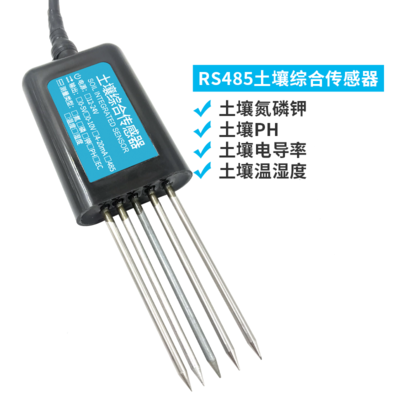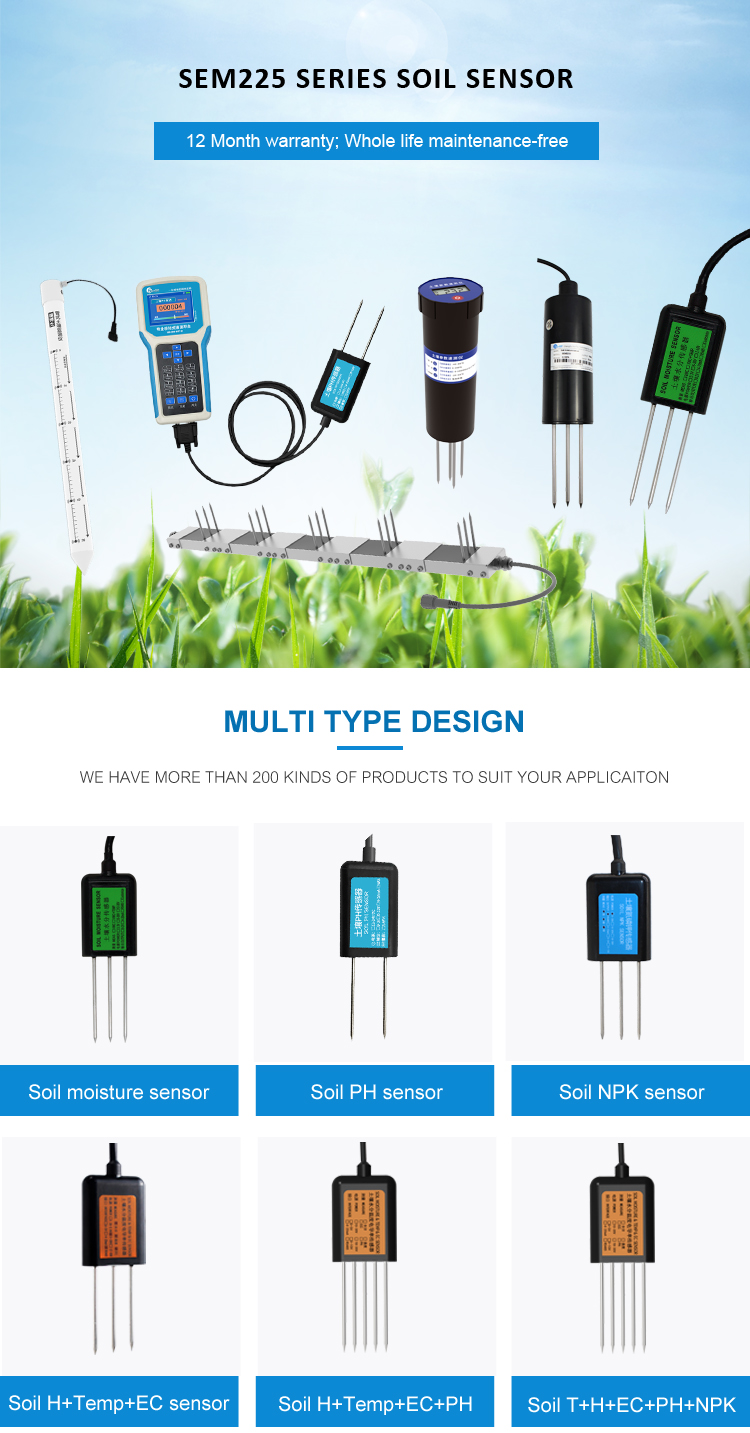Soil is an important natural resource and the material basis for agricultural production. Whether the parameters and quality of the soil environment can be monitored is of great significance for guiding the development of agricultural resources and agricultural production. In recent years, my country has attached great importance to the protection of soil resources and the construction of the ecological environment, and monitoring the soil environment has become the daily work of agriculture and environmental protection departments.
There are three traditional methods for monitoring farmland soil wet temperature, electrical conductivity and pH, namely: indirect measurement method, direct measurement method, remote sensing and field GPS positioning method. However, these three monitoring methods are either cumbersome and inconvenient to operate; or too simple to ensure accuracy; or time-consuming and expensive. All in all, it is lack of timeliness and accuracy, and it is difficult to realize real-time monitoring of farmland environment. In view of this, in order to effectively improve the detection technology and monitoring means, as well as improve the speed and accuracy of monitoring, it is necessary for us to use the current advanced five-pin soil sensor.
The five-pin soil sensor, also known as the conductivity soil temperature moisture PH four-in-one sensor, is a sensor device launched by SenTec for more convenient monitoring of soil temperature, humidity, conductivity and PH value.
5-Pin soil sensor overview
The five-pin soil sensor has the characteristics of stable performance, high sensitivity, fast response and stable output. Applicable to various soil types, it is an important tool to observe and study the occurrence, evolution, improvement and water-salt dynamics of saline soil. It can be buried in the soil for a long time, resistant to long-term electrolysis, corrosion resistance, vacuum potting, and completely waterproof. Accurately measure soil temperature, moisture, conductivity and pH value without destroying the original soil structure.

The sensor is suitable for soil moisture monitoring, scientific experiments, water-saving irrigation, greenhouses, flowers and vegetables, grassland pastures, soil rapid testing, plant cultivation, sewage treatment, precision agriculture and other occasions temperature and humidity, conductivity, pH value testing.
2. Five-pin sensor data upload method
In order to facilitate managers to understand the soil environment in a timely manner, the four-in-one sensor for conductivity, soil temperature, moisture and pH can be connected to the environmental monitoring host through 485 wiring and uploaded to the environmental monitoring cloud platform to monitor soil conditions in real time. It can also cooperate with the relevant soil data to control the irrigation system and other related equipment. Once one of the data of soil temperature, moisture, conductivity and PH value exceeds the set upper and lower limits, an alarm will be triggered to notify the management personnel to deal with it.
Features of the 5-pin soil sensor
a. Four parameters of soil moisture content, conductivity, temperature and PH value are integrated into one.
b. The threshold is low, the steps are few, the measurement is fast, no reagents are required, and the number of tests is not limited.
c. The electrode is made of alloy material with special treatment, which can withstand strong external impact and is not easy to be damaged.
d. Completely sealed, resistant to acid and alkali corrosion, and can be buried in soil or directly into water for long-term dynamic testing.
e. High precision, fast response, good interchangeability, probe insertion design ensures accurate measurement and reliable performance.
f. It can also be used for the conductivity of water and fertilizer integrated solution, as well as other nutrient solutions and substrates.
g. The measurement accuracy of pH value is high, up to ±0.3PH accuracy, the response speed is fast, and the interchangeability is good.
Installation method of 5-Pin soil sensor
Quick measurement method: Select a suitable measurement location, avoid stones, ensure that the steel needle does not touch hard objects, discard the topsoil according to the required measurement depth, maintain the original tightness of the soil below, and hold the sensor vertically Insert the soil, do not shake left and right when inserting, it is recommended to measure multiple times within a small range of a measuring point to obtain an average value.
Buried measurement method: dig a pit with a diameter > 20cm vertically, insert the transmitter steel needle into the pit wall horizontally at a predetermined depth, and fill the pit tightly. Long-term measurement and recording.

in conclusion
As one of the three foundations of information technology, sensor technology is a key technology since the beginning of the 21st century. Informatization and intelligence will be the focus of the development of agricultural science in the future. How to quickly and effectively obtain soil information with the Internet of Things technology is an important research direction of soil science, but also an important technical support for traditional soil environmental monitoring to modern soil environmental monitoring.




